ARM promises to turn any display into HDR, Greenpeace is pressing Samsung fiercely, and a resentful Qualcomm lies between the palms.
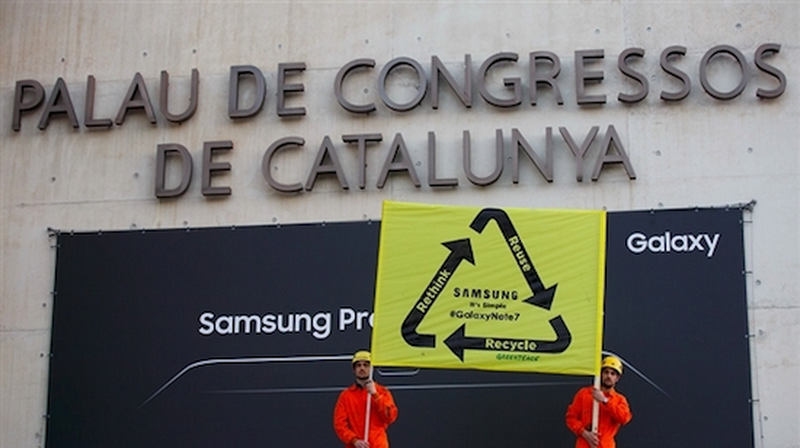
ARM does not yet know which side to approach the 'Internet of Things'
The Internet of Things (IoT) requires a powerful, energy efficient 50 cents chip. This is exactly what a group of technologists from ARM TechCon spoke about in an interview with EETimes. There is a plan to launch the global IoT by 2027, but how to implement it is not yet clear. A new SoC will be required, which will include new types of RAM and read-only memory, transmitting and receiving devices, and a new architecture for computing cores. And all this to solve the problem of energy consumption.
Jason Hillyard, director of software at the ARM wireless group, argues that to implement IoT in absolute terms, a universal SoC must consume 10 microwatts per megahertz, and 1 or 2 milliwatts when transmitting and receiving data.
Lucian Shifren, chief research engineer at ARM, points out that the main problem is the lack of adequate memory: 'Everyone is betting on ReRAM and STT technologies to replace SRAM and flash, but I don't think it will work for in fact … And in this direction I do not see any viable options. STT is expensive and consumes too much energy when recording information, and ReRAM and its analogues use too high voltages. '

Mike Mueller clearly knows something.
Mike Muller, Chief Technology Officer at ARM, talked about how ARM made test chips using a new type of memory designed from the ground up through academic research. However, he refused to share any information about the new chips, saying only that “Ideal is a non-volatile, low-power design that is good for both logic and memory …” In any case, industrial designs are still very, very far away.

From the above table it becomes clear that all the hopes of the past years for ReRam and STT are crumbling right before our eyes. These technologies do not offer any significant breakthrough to the user and cost insane money, like everything new. In practice, this means that there will be no global 'Internet of Things' in the near future, because a kettle with a capacious built-in battery looks unattractive and is difficult to manufacture (and therefore expensive). Yes, new household items with built-in network electronics will periodically appear, but they will not conquer the market.
ARM promises HDR imaging on conventional screens
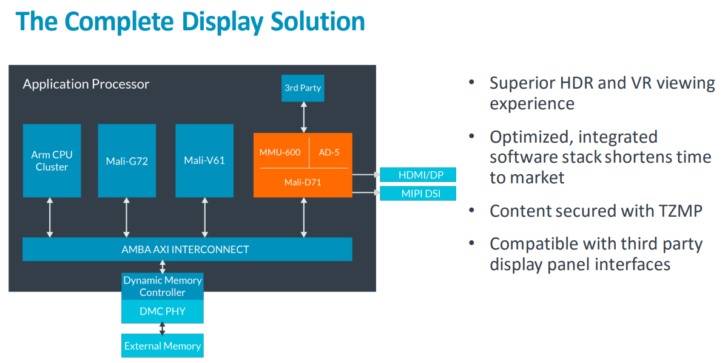
If you have a Android device, then most likely it is equipped with an ARM-based chipset. Companies like Qualcomm, Apple and Samsung buy the license from ARM. So when ARM improves something, we all win. ARM recently announced new display technologies that the company claims will be able to turn any display into HDR. In addition, they promise better power saving and performance for applications like VR. Overall, ARM is announcing three new technologies based on the 'Komeda' (formerly 'Cetus') architecture. The new imaging solution consists of a Mali D-71 GPU, CoreLink MMU-600 and Assertive Display 5.
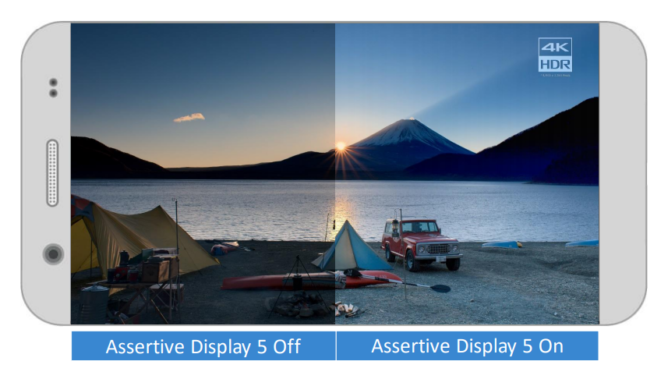
The Assertive Display 5 image post-processing chip allows you to get an HDR picture even on an SDR display (that is, on any display used in modern smartphones). We will have to wait a while for the first commercial samples to appear, but this is a very strong promise. The chip also supports HDR10 and H LG (hybrid log gamma, another HDR technology). Assertive Display 5 also provides several other cool features, such as night mode, which automatically adjusts the blue backlight. And like its predecessor, it can perform ambient light compensation, improving sunlight visibility without using the main GPU, thereby saving energy.
There is nothing special to say about the system memory management unit (SMMU) CoreLink MMU-600, except that all characteristics have grown compared to their predecessors.
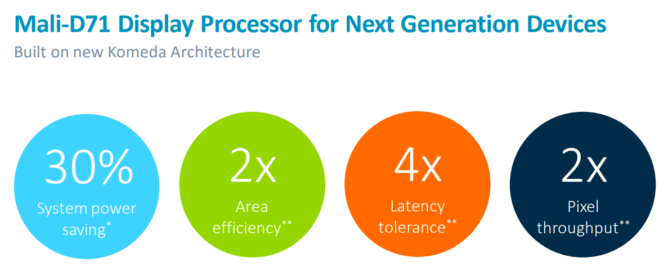
The new Mali D-71 GPU also offers enhanced functionality over its predecessors. Among other things, it is optimized for 4K @ 120fps, making it an ideal candidate for VR applications.
Greenpeace presses Samsung and praises Apple
It seems that wherever you look, they only talk about Apple, Samsung, Google and others. We are told about gigahertz, performance, new camera capabilities. The opportunities for innovation are amazing, but what are all these companies doing to make their production environmentally friendly? The Greenpeace report on this topic was discussed on one very 'green' resource.
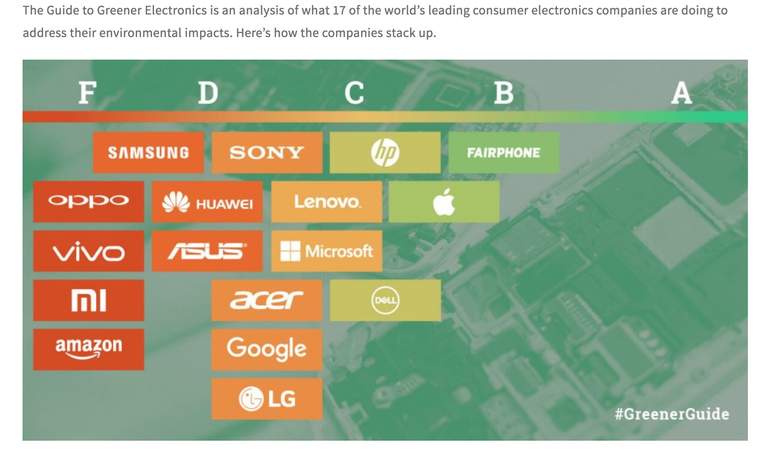
Greenpeace has just released another Greener Electronics report, which analyzes the strategies of the 17 largest consumer electronics companies. Instead of focusing on the number of gigabytes and megapixels in devices, Greenpeace looks at gigawatts consumed and looks at the greenhouse gas (GHG) emissions of electronics manufacturing. This data provides insight into which tech giants are taking action to protect the planet and which are still 'smartphones' into it. Since 2010, Greenpeace has been challenging IT brands to take responsibility for the rapidly growing carbon footprint of the digital age and push them to renewable energy. To date, more than 20 IT companies have committed to switching to 100% renewable energy sources, with a total volume of 7 GW. But this is just the beginning of what IT companies and corporations need to do to combat climate change.
Here's the reality – before you turn on your brand new smartphone, 80% of the carbon pollution it can give will already occur. This is due to the long chain of its production. Devices have become more energy efficient, but their increasing complexity means that more energy is expended in their production. In 2007, the production of the first iPhone took about 908 terawatt-hours, which is approximately equal to the consumption of electricity in a country like Japan. The supply chain for most electronics is concentrated in China and other parts of Asia, where coal combustion remains the dominant energy source. With the number of smartphones doubling by 2020, along with the rapid growth in the number of Internet-connected devices, factories will 'burn coal' even more intensively, which means the issue of switching to renewable energy sources is more urgent than ever.
Greenpeace analyzed the two largest smartphone companies – Apple and Samsung. And they found a huge difference in the way companies are trying to tackle climate change.
Apple
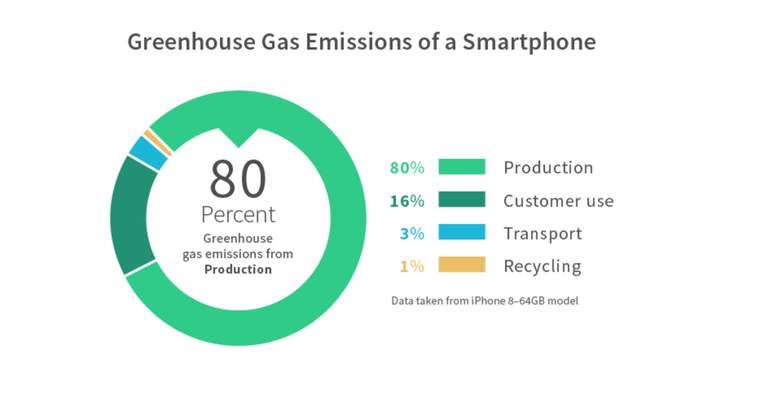
B Apple showed the highest results in the transition to renewable energy sources. They have been the most active in rolling out new projects that have generated 1.1 GW of clean green energy. What's more, Apple is the first IT company to expand its Green Manufacturing (RE) commitment to 100%, including its suppliers, whose emissions account for 80% of the total Apple. Apple has already deployed a network of energy sources in China that provide 485 megawatts of power, and it has also secured 14 of its suppliers to make similar commitments in the production of product components Apple.
Samsung
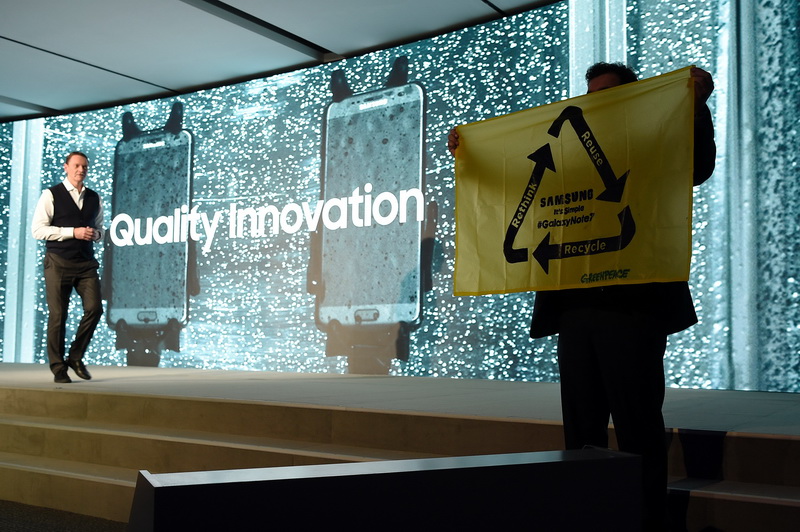
A Greenpeace activist protests during a presentation given by David Lowes, Chief Marketing Officer of Samsung Electronics Europe, on February 26, 2017 in Barcelona, ahead of the official opening of the World Mobile Congress.
Samsung's lack of progress puts them at the bottom of the Greenpeace rankings. Unlike other companies, Samsung has not moved its factories and supply chains to renewable energy sources. Samsung reported more than 16,000 gigawatt hours of electricity consumption in 2016, but only 1% of that energy comes from renewable sources. Samsung's rapid growth and ignorance of current trends means that emissions will only grow. Over the past two years, the amount of emissions has increased by 24%, and in 2017 it is planned to increase emissions by another 15%. Unlike Apple, Samsung does not set itself the goal of cutting emissions on its own, forcing its suppliers to do so, and publishing a list of the best to stimulate others.
Here are four ways Greenpeace is proposing for IT companies looking to save the planet for posterity:
1) Be more transparent. Consistent and detailed reporting of a company's energy footprint is essential to assess whether its efforts are affecting emissions.
2) Make a long-term commitment to 100% renewable energy and force suppliers to do so.
3) Focus on impact, not reputation. The transition to renewables will not happen overnight, and there are no effective cuts to this path. Buying or lending a renewable energy source outside of your business can give you a reputation, but it doesn't show you really want to move away from fossil sources.
4) Don't forget about propaganda. In many markets where there is no adequate access to renewable energy sources, the first to introduce them will be able to influence local politics.
Friends, maybe you can explain why the Samsung display in a Samsung smartphone 'leaves a carbon footprint in history', but the Samsung display in iPhone does not? And how much can you trust Greenpeace's information?
In Taiwan, Qualcomm was insulted and they left, destroying dreams about 5G
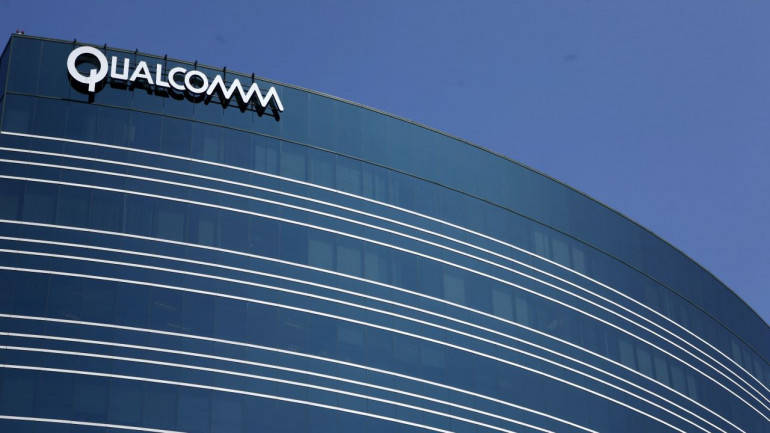
To the south of China is the large island of Taiwan, its sides are washed by the South China and East China seas, and a generous tropical sun shines from above. It just so happens that a significant proportion of the chips are produced there, in large and clean factories, abundantly scattered among the palm trees. This is the guarantor of progress and the reason for the well-being of the islanders. In this idyll, the scandal between Qualcomm and the Taiwan Fair Trade Commission sounded like a bolt from the blue. It all started with the fact that Qualcomm “incorrectly” (details unknown) placed its orders between local manufacturers, manipulated prices and was immediately punished for this with a fine of $ 775.5 million. The fine will be paid, but Qualcomm took revenge in an area where it has no equal competitors by announcing its withdrawal from the Industrial Technology Research Institute (ITRI, 工研院) project to develop and implement 5G – communications on the island . And this caused a conflict between the commission and the Minister of Economy of Taiwan Shen Chong Chin (沈榮 津). The question is point-blank, but the gist of it can be gleaned from Minister Shen Chong Chin's statement: “From the ministry's point of view, industrial development should be prioritized over fair trade as it is linked to national interests.” However, these events could benefit the company Mediatek, which breathes in the back of Qualcomm in the big race 5G.
What would you do in this case? 5G or fair trade?
